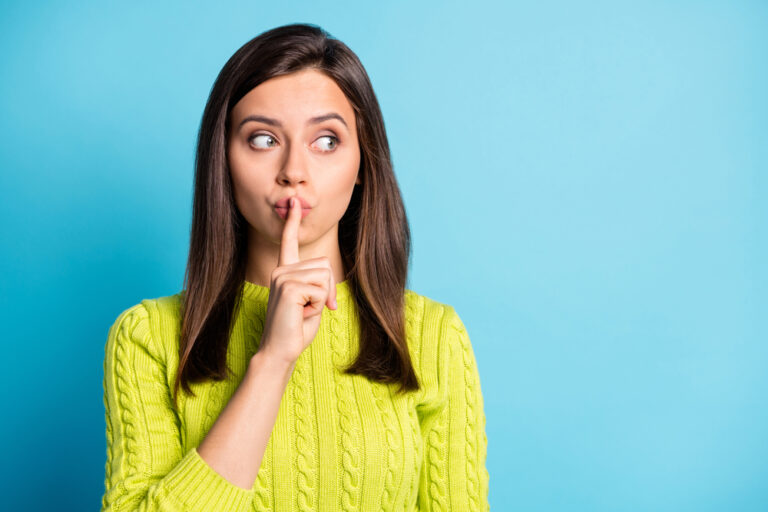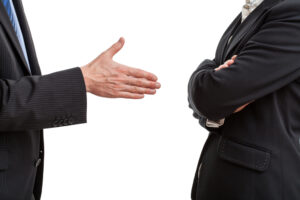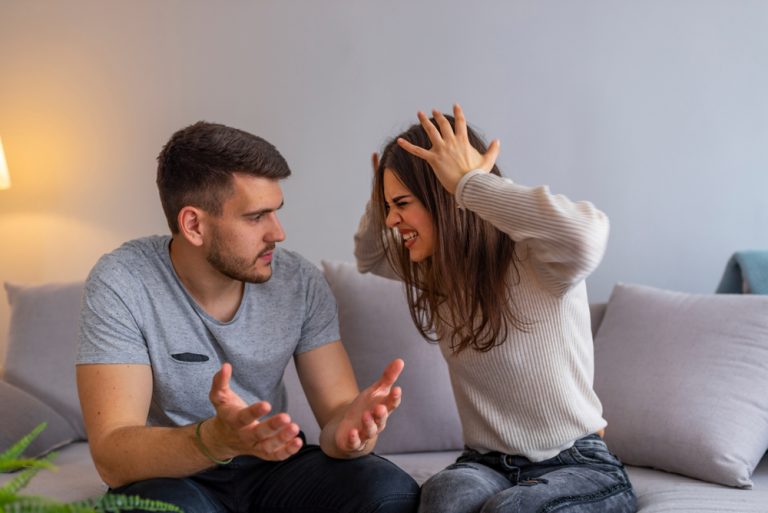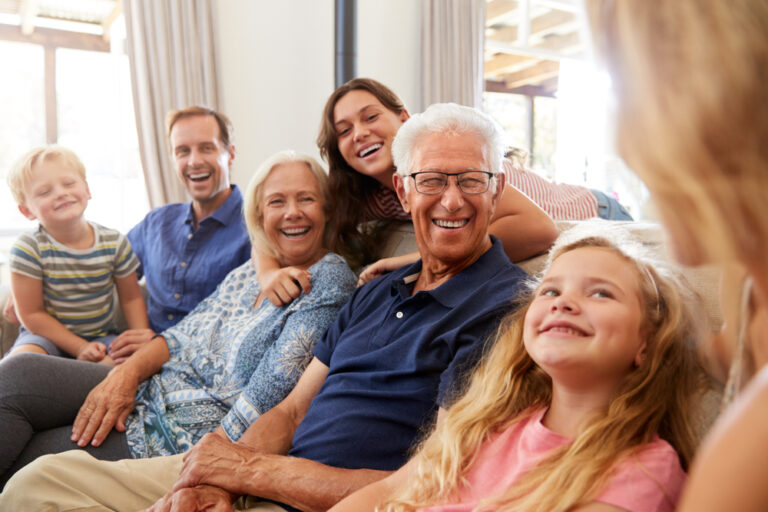
Body language is a form of nonverbal communication, and whether you know it or not, it can say many things about you without having to speak. Learned how to interpret body language, and find out what your expressions and movements are saying with these expert insights.

Body language: Crossed arms
Crossing your arms? According to Barbara and Allen Pease in The Definitive Book of Body Language, others can read crossed arms to assume you are distant, nervous, anxious, defensive, or stubborn. However, crossed arms have their pluses as well. Driver explains that this pose can make people better at sticking to a difficult task, referencing a study that found adults who crossed their arms and were then asked hard math questions, were 30 percent more likely to solve them than those who held their hands on a table.
“The act of crossing your arms utilizes both your left and right brain, creating higher cognitive function,” says Driver. Former FBI agent Joe Navarro even calls arm-crossing a “self-soothing” gesture in a 2019 Wired video, intended to comfort yourself rather than “block” others.
So the next time you’re confronted with a tough question and they’re crossing their arms, don’t assume you’ve made them mad; the crossed arms might just mean they ‘re trying to come up with a response. It is beneficial to understand body language and to control it, not only in casual interactions but also in the workplace.
Body language: Eye contact
Make eye contact if you want your body language or nonverbal communication to indicate you are listening to another individual. Yet limit it: They can interpret an excessively aggressive eye lock as offensive.
“When you give more than 80 percent, the person you are communicating with will feel uncomfortable,” explains Janine Driver, author of the New York Times bestseller You Can’t Lie to Me.
Give too little and it can be a sign of deception (40 percent or less). The magic number is 60 percent or just a little over half. “Give them eye contact, then slightly glance away.”
Body language: Sitting with legs spread
Driver claims you are marking your territory and exuding dominance when you sit with your legs spread. “People with power are seen to take up more space,” she says.
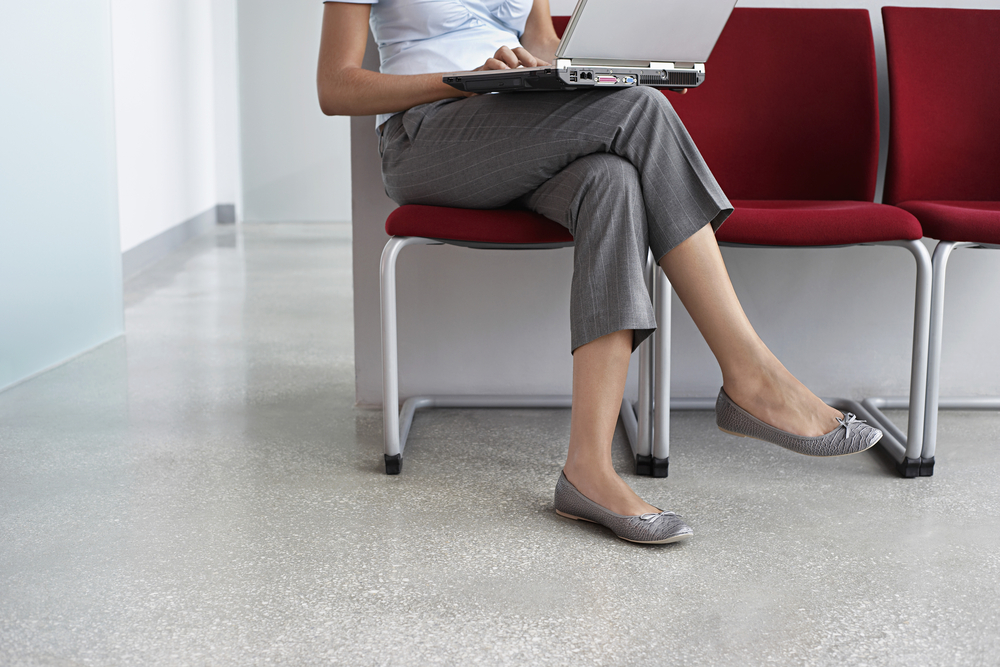
Body language: Sitting cross-legged
If you are sitting with your legs crossed, in an ankle over knee position, you are confident and dominant, Driver says. Known as “figure four” in body language circles, Driver says you open up your “power zone,” or the nether area, when you sit in this position.
“We have three areas on our body where we open up when we are stress-free and relaxed: the neck dimple, belly button, and ‘naughty bits,'” she says. It’s a mostly male movement but Driver says women are little by little starting to sit like this.
Crossing your legs at the ankles while sitting is known as the “ankle lock.” This body language or nonverbal communication might mean holding back, being uncertain or afraid, making it common in interview situations. And ladies, cross your legs at the knees if you want to appeal to a man. Men voted this sitting position as being their favorite when it comes to women, according to the Peases.
Body language: Standing with hands-on-hips
You may think that the “Superman pose” is nonverbal communication that shows off your side of confidence, but be careful because Driver says it can also turn out to be aggressive. That’s because your pointed elbows are taking up more space and stopping anyone from getting near you.
“We become very territorial,” when we do this pose, Navarro explains. Even propping just one hand on your hip can give off an intimidating vibe, say the Peases.
Body language: Reaching for a handshake
The practice of shaking hands with anyone goes as far back as the Ancient Romans. At first, people used to hold onto the forearms of each other, and now we reach for the palm of the hand of someone. Yet, before going in for the grab, there are essential thoughts to consider.
According to the Peases, handshakes are a sign of trust and welcome, so touching first means you assume the other person accepts you and they’re pleased to see you. Mimicking a handshake to someone who may not be so accommodated to meet you might lead to negative feelings.

Body language: Smiling often
Making a habit of smiling and laughing during conversations and interactions with others may bring positive results. You may gradually improve relationships when smiling at another person.
“Evidence shows the conclusively that smiles and laughter build the immune system, defend the body against illness and disease, medicate the body, sell ideas, teach better, attract more friends, and extend life,” say the Peases.
In their book, they say that this is part of the reason it is amusing or that so many people would find it appealing to have the opportunity to make others laugh. Smiling can help spread positivity, and you can use certain tricks of body language to do almost anything.
Body language: Interlacing fingers
This is a romantic gesture with another person, but when you interlace your own fingers, it could be a sign of tension or discomfort. According to Navarro, this is another self-relieving motion that indicates discontent.
“When something’s troubling us, we tend to stiffen our fingers, interlace them, and…move our hands back and forth very slowly,” he says in the video; he furthers his discussion of body language and nonverbal communication in his book The Dictionary of Body Language.













